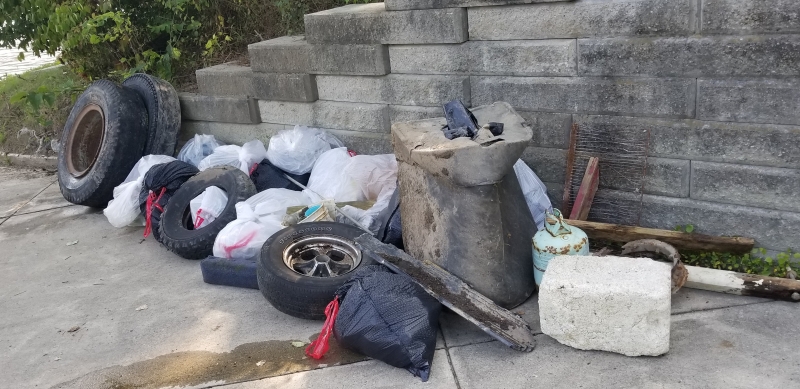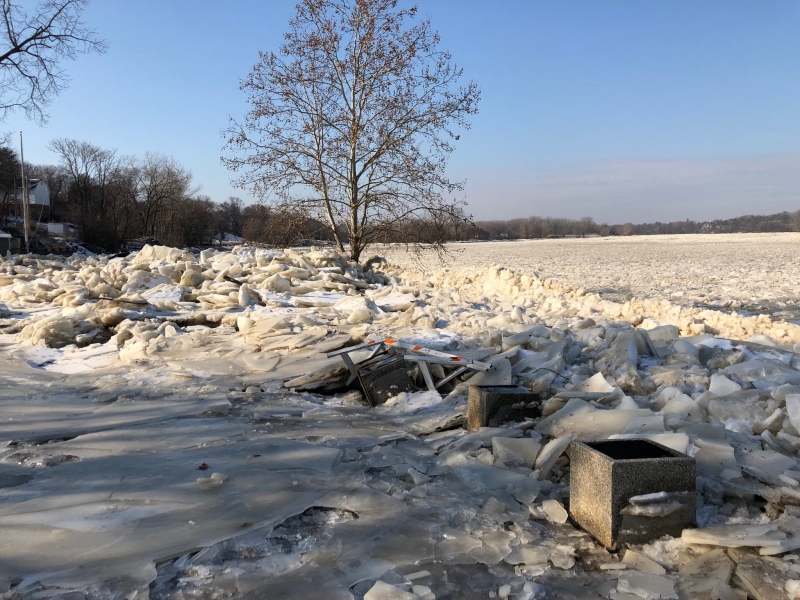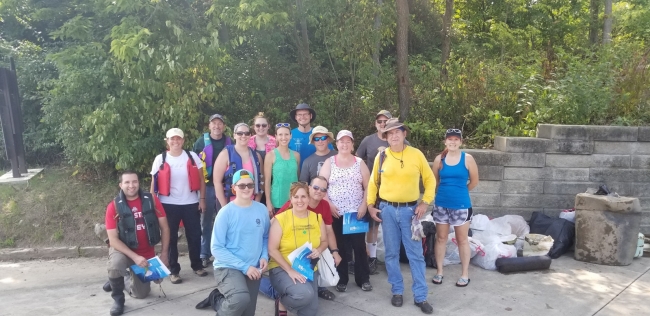By Kris Patterson, Executive Director of Partners for Clean Streams
Lake Erie experienced a drinking water crisis in 2014, as well as ongoing algal blooms, leading to an increased preference for bottled water, and a potential source for marine debris. At Partners for Clean Streams, we are working to help reduce further impacts by taking on marine debris in the freshwater tributaries that lead to Lake Erie. With support from the NOAA Marine Debris Program, our Clean Your Streams program allows kids and adults alike to get engaged in marine debris removal. Through our partnership, we plan to remove at least 30,000 pounds of marine debris and improve habitat for walleye, white bass, and yellow perch.

Through the first 7 months of cleanups on this project, our volunteers have been able to remove 1,522 pounds of debris. While they are busy removing debris, they are also learning. Our volunteers are often puzzled by how water heaters end up in trees along the Maumee River, couches end up embedded in the banks of Swan Creek, and 55 gallon drums and food wrappers end up on the most beautiful islands out in the middle of the Maumee River. One of the constant questions that I’ve explored with volunteers over 22 years of stream cleanups, is how did these items get here? While I can’t always say for certain how a specific item ended up where we found it, I can remind people it’s probably not because someone threw it right there, or meant for it to become marine debris. It may have moved through our storm drains, been blown out of a car or shopping cart, or been tossed into a roadside ditch (and we have a lot of them in Northwest Ohio), without someone ever realizing that the ditch is connected to a tiny creek, then a bigger stream, then to the Maumee River, and eventually Lake Erie.
Water is a powerful force in all its forms, and has impacted our project activities. This past spring, along the lower Maumee River, we had severe ice jams, with stacks and stacks of ice piled up in the river and along the banks, making it look like a new ice age had arrived in Northwest Ohio. The ice jams dislodged docks, wiped out canoe and kayak racks, swallowed picnic tables, damaged shelters, and tore out fencing, roads, signs, and many headstones in a low-lying cemetery. In our cleanups this spring and summer, we will find docks jammed into weird places and signs that belong along the banks of the Maumee River wedged under mud. During this wetter than normal season, trash that was tossed along a roadside ditch or ended up in a storm drain has made its way to the nearest creek for us to retrieve.

Our NOAA Marine Debris Program removal grant has helped ramp up our removal efforts, giving us the chance to partner with our local parks and municipalities to provide new cleanup opportunities out to little known islands and harder to reach places. While lugging the debris by hand or back to shore in the canoes and kayaks is hard work, it’s fun, rewarding, and eye opening work.


